From defining the mission to post-award analysis, grantmakers have to think strategically and economically along every step of the grantmaking process to maximize their impact.
Grantmakers want to make applying easy in order to respect grantees’ time. They want transparent, multi-step processes that are simple yet effective. And they want seamless communication between stakeholders in the process and the ability to leverage data to improve funds.
Meanwhile, grant seekers are demanding more from their funders, and funders are turning up the heat when it comes to expectations around data and verifiable impact.
In this piece, we’re going to describe a grantmaking process that meets these and the other ever-evolving needs of both grantmakers and grant seekers.
The evolving grantmaking process: A 10-step cycle
1. Articulate your mission
Your mission is literally why your organization exists, and yet it can easily be overlooked or get lost in the details. But let’s be clear: it’s plainly impossible to make a successful or efficient grant if you don’t have an official goal in mind. Specifically, without creating a clear and detailed mission statement, you will have difficulty:
- Creating and meeting concrete goals related to your mission
- Creating efficient or helpful guidelines or application materials
- Choosing the best fit grantees
- Knowing how to track and report on your grant
How do you form your mission? For most grantmakers, a mission is a balance between two things: the passions/interest of your funder(s) and the needs of the community that you will be serving.
So, to get started, try creating a Venn diagram, listing what’s important to your organization and what the needs of the community are. What lies in the two circles that overlap? That’s where the best work can be done.
Next, collect data. Conduct interviews, survey past grantees, and look at what’s already being funded by others. Where can your funds go the farthest and impact the most people?
Finally, make sure everyone knows your mission. This includes your staff, the community, and everyone applying for grants. Incorporate it into your website, your meetings, your press opportunities, your marketing materials, and your interactions with the public.
Remember that a mission and vision statement can change and should with each grant cycle, especially if the needs of the community or the focus of your organization change.
For example, many foundations saw community needs change swiftly and drastically during the coronavirus pandemic. It would have been easier to keep to their current mission, but the community suddenly had different, and more immediate needs.
2. Determine all funding and budgeting details
Don’t just throw money at problems. A well-run grant carefully budgets for all steps in the grantmaking process, from collecting and reviewing applications, to guiding grantees and reporting on results.
- What kind of people power do you need to ensure that the grant funding gets into the right hands and is used optimally?
- How much do you need to spend on grantmaking software, grant reviewers, or consulting costs?
- How will your funds be distributed and to how many different groups or individuals?
- How will you track the funds once they’ve been distributed, and how will you report on their impact?
Remember to spend money where it counts: budgeting for administrators with significant expertise and experience in grantmaking could go a long way.
So could budgeting for grant management software that’ll save you time and resources throughout the process. Twenty-seven percent of donors report that technology makes it easier for them to support important causes.
3. Create your grant application
Your grant application should reflect your mission, your goals, and your philosophy. And creating a thoughtful grant application can ensure the rest of the grant application process goes smoothly.
First, write out any important guidelines and present them on a landing page. Having a branded, well-designed landing page is like creating the cover to a book: it’s a first impression that gives your grant authority and sets the stage for the rest of the process.
Submittable’s landing pages can be customized to seamlessly look like the rest of your website and branding, from colors to fonts.

Second, create the grant application form itself. Each question you ask should have a specific goal: is it about a requirement of the grant? Are you collecting demographic information? Does the question help reviewers fill out their scoring rubric?
You can save administrators and applications time and stress with grant management software like Submittable:
- Eligibility checks and charity checks can automatically pre-qualify grant applicants and provide you with information about their non-profit while saving everyone time when it comes to organizations who don’t meet baseline requirements.
- Branched questioning makes certain that you can collect information from your grantees based upon their previous answers in a way that’s not confusing or overwhelming.
- Submittable’s file system means that applicants can submit over 50 types of files and reviewers can view them all in one place without downloading.
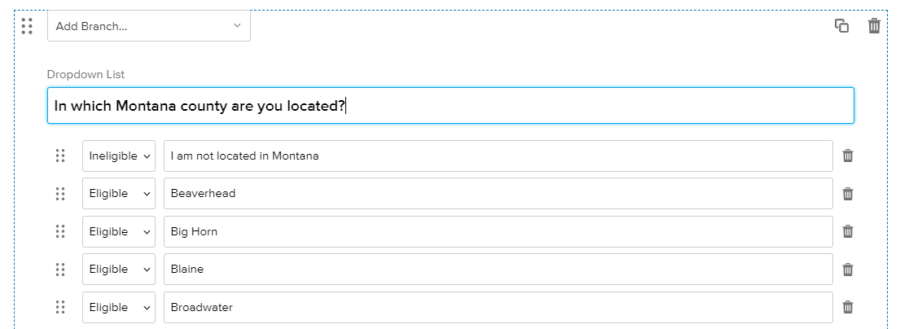
4. Market your grant opportunity
You now have an amazing grant opportunity, a polished landing page, and an accessible, streamlined application. Now all you need is grant applicants.
Marketing your grant opportunity is critical. The more widely news of your grant spreads, the more likely the best fits will get wind of your funds. The more applications you receive, the better fit you will find.
How can you get the word out? Here are just a few ideas:
- Press releases
- Social media
- Paid advertising
- Speaking opportunities
- Online forums
- Industry publications
- Website banners and popups
Grant search engines are also a great way to find people who are looking for you. Submittable has a large base of submitters who use our Discover search tool to find grant opportunities via keyword searches. Make sure to attach relevant tags to your opportunity to take advantage of our tool!
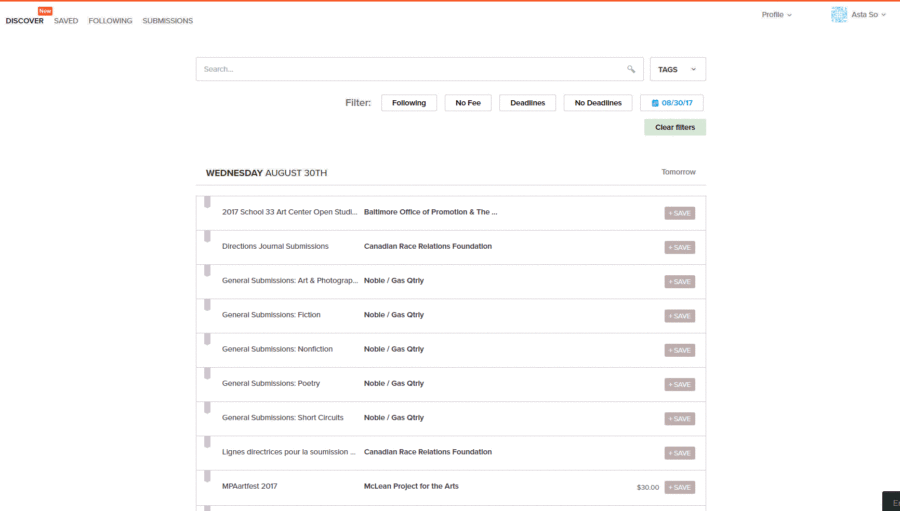
5. Review the applications
Reviewing grant applications is hard work and often involves an extensive team. Reviewing thoughtfully and thoroughly is key, but this take time and sustained effort.
Grant review teams vary greatly; some just consist of one or two full-time employees. Others involve a room of stakeholders. Still others involve hundreds of volunteers, scattered across cities, states, or regions.
Think carefully about how you assemble your grant review team:
- Do they have the appropriate background and experience?
- Are they a diverse group? Diversity can include race, gender, sexuality, disability, socioeconomic background, geographical location, and more.
- Does the group reflect the community you’re serving?
- How many people are needed to efficiently review the applications?
- Should certain group members review applications first (or last)?
6. Select the best applicants
Once your review team is ready, you’ll need to create a scoring system or rubric and then train the team about that system. To reduce bias, also consider diversity, equality, and inclusion (DEI) training for everyone involved in the process.
Creating a scoring system is easy with Submittable, and can reduce the number of issues associated with reviewing applications in person in marathon sessions, including group think, bias, fatigue, and subjective selections.
Your voting system could be as simple as a thumbs-up, thumbs-down click of a button or as complex as a scored rubric that also leaves room for nuanced comments and conversation.
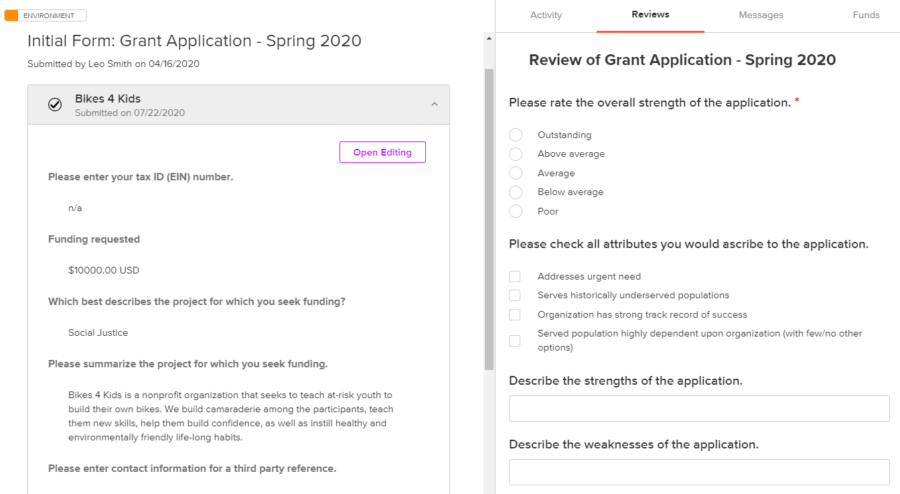
Add different rounds or levels to your review process to further organize the process—perhaps you first quickly toss out ineligible applications in the first round, then analyze applications for their sustainability, then make your final selections.

An objective, streamlined, and structured review process will lead you to the best proposals in the shortest amount of time in a way that you can be confident in the results.
The proliferation of tools like Submittable’s online grant management software has made it possible for foundations to scale their impact through more efficient, effective, and strategic focus during the grant review process.
Ball State University’s grant program, for instance, was able to cut their administrative time by 10%, leaving more time for shaping the program and refining the core mission.
Streamline your grant process, streamline your giving
Improve your impact by improving your grantmaking operations.
Learn how by watching our grant management demo.
7. Award and fund your grantees
Simultaneously notify all the applicants who didn’t receive a grant. (This is easy to do with Submittable’s bulk messaging system.) Be sure that their message includes support and encouragement. If an application was close but not quite right, consider sending them a rejection letter that explains your thought process and offers constructive advice for next time.
Next, notify your grant winners. Message them about receiving their grant and send them additional forms to fill out as you move to the next step. These forms could involve tax information, reporting information, or surveys.
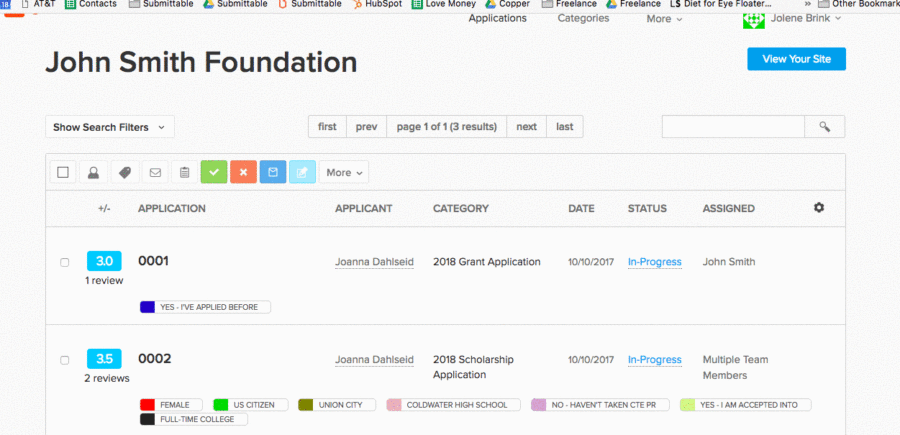
Submittable’s Funds feature tracks when you allocate your funds and to whom—and helps you visualize where your funds are going.
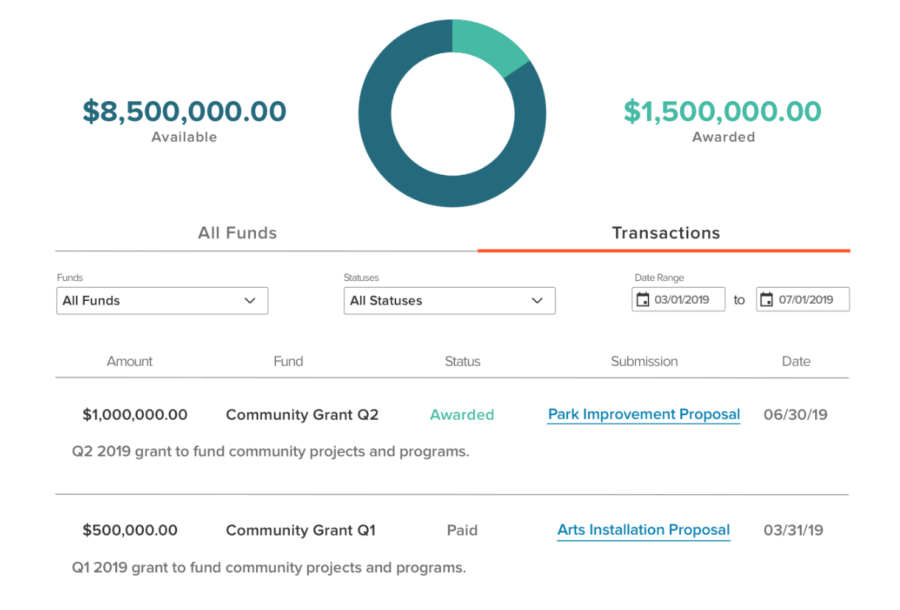
8. Support and assist your grantees
In the past, it would be normal for grantmakers to award funds, wipe their hands, and congratulate themselves on a job well done. But this isn’t the case anymore — and that’s a good thing for everyone. It’s no secret that working together gets the most done, and it’s no different with grant funders and grant recipients.
- Get to know your grantees and their mission.
- Ask them about their operating costs, budget, and needs.
- Look for other ways that you can support them and their cause besides your grant.
- Signal-boost their work by talking about your work on your platform (social, email, etc.)
- Keep in contact with them before, during, and after you fund them.
9. Collect data and report
When it comes to data, grantmakers embracing digital transformation will set up methods to assess performance and results at every step in the grantmaking process. The focus should be on outcomes as well as oversight of grant-funded programs.
This helps to increase buy-in among grantmaking teams and grantees on the front end, while also managing risk on the back end.
Continual discussions that are data-driven will serve to improve communication and collaboration with grantees. That’s where you want to be—not knocking on your grantee’s door once or twice per year begging for a grant report.
You’ll want to collect data about your grant, analyze it, and then report it to your funders, to your own organization, to the grant world, and to the public.
With Submittable’s built-in reporting tools, reporting can go from a tedious slog of spreadsheets and calculations to a few button clicks, imports, and labels.
You can see your data in graphs and visuals that make it easy to show your impact — or uncover your areas for improvement.

10. Make improvements for next cycle
Now that your reporting is complete, you can take a look at how you can improve your grant for its next cycle. Look at each of the steps above and ask yourself how each one could be more efficient, more economical, more streamlined, or more thorough.
Even if your grant is having an enormous impact, you can still improve your cycle in other ways, too. Here are some areas that can always use improvement.
Consider: how can you:
- Make your grant more accessible?
- Make your grant, your review pool, or your organization more inclusive?
- Further increase the quality or quantity of your applications?
- Improve communication between you and your grantees?
- Make the application process easier for applicants?
- Help your grantees better accomplish their own missions?
- Grow your program or foundation?
Always take a good look at your mission and your goals at the end of your process. Are you and your grantees still aligned? Does your mission need to change or does your approach need to change?
And with that, you’re back to Step 1 in the grantmaking process cycle.
Data-driven tools accelerate learning and impact
In philanthropy, tech has automated tedious and repeatable tasks that give staff more time to focus on deeper work that requires significant analysis. When the efficiency of specific high-volume activities is improved, it opens up space for more meaningful work for grantmaking teams.
